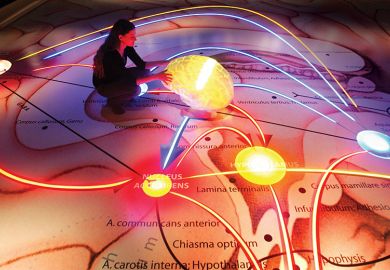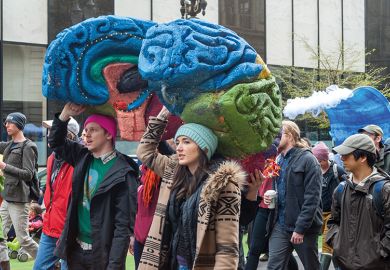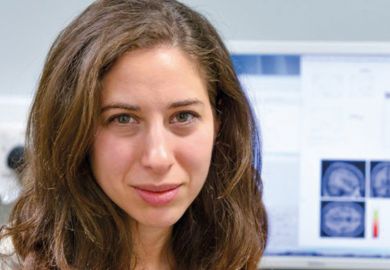David Eagleman is a neuroscientist, adjunct professor at Stanford University, founder of Neosensory (“a company which translates the unhearable and unseeable into the realm of the felt”), author and science communicator. His previous books (including a much-praised work of speculative fiction, Sum: Forty Tales from the Afterlives) have been feted for the quality of their writing and for their exciting ideas. His work on “sensory substitution” has transformed lives and offers great possibilities for persons living with sensory restrictions such as hearing loss.
Eagleman brings this formidable background to his new book, Livewired, and, aiming high, asserts “there is no overarching framework that tells us why and how the brain does what it does. This book lays out that framework, allowing us to better understand who we are, how we came to be, and where we’re going.” This is a huge claim, and I suspect that evolution does provide such a framework; as the geneticist Theodosius Dobzhansky famously put it: “Nothing in biology makes sense except in the light of evolution.” The brain does not sit outside biological evolution, any more than other organs.
Livewired is very good in parts, sufficiently so to make this reviewer wish that Eagleman had written a different book, because there is undoubtedly a remarkable book trying to escape the confines of this one. The long fourth chapter, “Wrapping around the inputs”, is a sometimes jaw-dropping exposition of research on sensory substitution, augmentation and enhancement. It describes the work of the author and others on bypassing channels to the brain that are in some way damaged. Normal hearing depends on the integrity of the auditory system – damage that, and deafness in varying degrees may occur. Combining some clever tech and thought, Eagleman and his colleagues have figured out how to turn sound waves into sensations registered on the surface of the skin – bypassing the ears entirely to provide a new channel of information into the brain. Other clever experiments have figured out ways of getting sensory information to the brain through the tongue, for example. This chapter left me longing for more: the details of the inside stories of the patients, the tech, the company and the lives helped are irresistible, and a testament to human ingenuity.
The following chapter, “How to get a better body”, is a similarly fascinating story, but is far too short, with underdeveloped accounts of bionic arms, how tools become extensions of body parts, the horrors of locked-in syndrome, walking with prosthetic limbs, and much more besides. More of this, please.
Eagleman suggests that “Our machinery isn’t fully preprogramed, but instead shapes itself by interacting with the world”, an underdeveloped claim requiring a much deeper discussion of the roles of noise, and the brain’s own intrinsic activity, in the shaping of the brain through the life course. “Noise” refers here to the amplification of small, chance events during the unfolding of the recipe in the genome, a theme emphasised by the neurogeneticist Kevin Mitchell in his recent book Innate: How the Wiring of Our Brains Shapes Who We Are. Mitchell’s key point is that the genome is a type of probabilistic recipe, unfolding in stochastic, somewhat unpredictable ways as the result of noise during the journey from fertilised egg to fully developed human. Thus, identical twins are not really identical, despite outward appearances.
Intrinsic activity is, in essence, the brain’s ongoing conversation with itself, what the neuroscientist Marcus Raichle refers to as its use of “dark energy”. It is apparent now, as the result of imaging experiments, that the brain is organised around functional networks. The exact number of these networks is a little uncertain, but there is a consensus that there are three central ones: the “default mode” network, the “task positive” network and the “salience” network. If you are in a functional brain scanner and are asked to close your eyes and not do anything, you “default” to thinking about the big picture of your life and your social relations. You will journey into your past, present and future (“mental time travel”). Careful measurement shows that perhaps 40 per cent of our waking hours invokes this almost brain-wide network – you are staring out the window not in a state of mind-blankness but rather in a ferment of ruminative thought.
The default mode brain network is damped down dramatically when you focus on the specifics of a task, because of the action of the “task positive” network. You can test this yourself. Look away from this text – and close your eyes. Unbidden, thoughts about your life will flow. Now, try to keep those thoughts flowing while you return to the text and try to circle all the instances of the letter “e” in this paragraph. You might rapidly switch between big-picture thinking and task-focused e-circling. But you can’t do both at the same time: the task positive network and the default mode network are opposed to each other. And both are damped down by the salience network, because our attention is captured easily by changes in the outside world – things we need to be vigilant about and pay attention to.
To put these two thoughts together: the brain is shaped both by noisy and unpredictable processes during development, and by its own ceaseless, intrinsic, self-organising activity. Eagleman’s stress on “interacting with the world” has to be seen in this context.
Other surprising omissions in such a tech-oriented book are the twin fields of optogenetics and chemogenetics – techniques allowing the introduction of light-sensitive or chemical-sensitive genes into certain brain regions. These regions can then be activated or inactivated in a carefully calibrated fashion. Both techniques have revolutionised neuroscience – perhaps even more than functional brain imaging has, since they allow causal inferences to be made more securely about which brain regions participate in which functions at a given time. Human trials in optogenetics are already ongoing, and a recent breakthrough has been announced in the restoration of at least some vision in a person with the genetic disease of retinitis pigmentosa.
Livewired should also have been edited much more carefully. Perhaps I am oversensitive, but referring to a newborn child as “wall-eyed” seems to me inappropriate. The available technical terms such as amblyopia and ocular divergence could have been introduced and defined instead. Metaphors are sometimes mixed: DNA is not a blueprint (correct), but apparently the “first domino that kicks off the show”. Some sentences lack context (and perhaps meaning). After a paragraph-length discussion of soccer, we are left with the conclusion that “Plows farm faster than swords”. I guess this is a biblical reference, but I struggle with its relevance.
A few paragraphs later, a mid-sentence thought – about “burning soccer into the circuitry” – is left hanging. What circuitry? Motor circuits? Metacognitive sporting performance circuits? We are told, correctly, that the brain is “very different from a digital computer”, but then, a few pages later, that it “acts as a general purpose computer”. Which is it? Finally, although Eagleman invokes it several times, he misrepresents the story of Star Trek’s Captain Picard and his assimilation by the Borg…
Shane O’Mara is professor of experimental brain research at Trinity College Dublin.
Livewired: The Inside Story of the Ever-Changing Brain
By David Eagleman
Canongate, 320pp, £9.99
ISBN 9781838851002
Published 1 July 2021
The author
David Eagleman teaches neuroscience at Stanford University. He was born and raised in the mountains outside Albuquerque, New Mexico. His parents were both intellectuals, and he recalls spending much of his childhood “threading the stacks” of his father’s “impressive library in our basement – with books in eight languages”. He initially studied at Rice University, with a year abroad at the University of Oxford, majoring in his “first love: British and American literature”.
In his final semester, however, Eagleman discovered neuroscience and “knew immediately I had found my calling. I read every book in the university library on neuroscience, and then I submitted two applications for neuroscience PhD programmes. One school sent me a personalised rejection letter, letting me know that as a literature major I would never make it in neuroscience. The other [Baylor College of Medicine] took a chance on me.”
It is his academic research, as Eagleman sees it, that “opens unforeseen opportunities to improve people’s lives. In the most recent case, theoretical work on sending information to the brain via unusual pathways (through the skin) led to a new product (the Neosensory Buzz) to help people with hearing loss.”
Asked about the key misconception he hopes to challenge, Eagleman replies: “Textbooks typically present the brain as a fixed map: this is the area for vision, this is the area for hearing, and so on. But in fact the brain is a dynamic, living, electric fabric that reshapes itself to match the challenges presented to it. If you become blind or deaf, those parts of the map are invaded by neighbouring territories…The brain represents an alien computational material that we don’t yet know how to build, and my goal with this book is to expose the secrets under the hood.”
Matthew Reisz
POSTSCRIPT:
Print headline: The moulding of our minds
Register to continue
Why register?
- Registration is free and only takes a moment
- Once registered, you can read 3 articles a month
- Sign up for our newsletter
Subscribe
Or subscribe for unlimited access to:
- Unlimited access to news, views, insights & reviews
- Digital editions
- Digital access to THE’s university and college rankings analysis
Already registered or a current subscriber?










